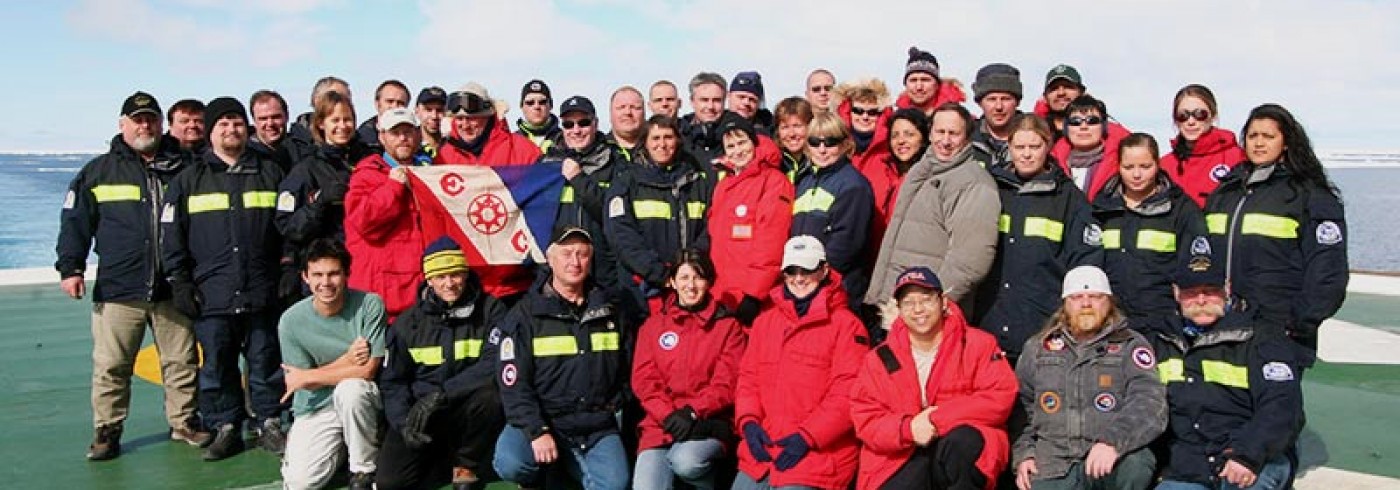Diversity, distribution, and relative abundance of marine mammals, penguins, and seabirds from South America to McMurdo Sound during the 2006 transit of the Icebreaker Oden
5 December 2006 - 25 December 2006The aim of this project was to document the diversity, distribution and relative abundance of pinnipeds, cetaceans, seabirds, and penguins using systematic distance sampling methods during a platform-of-opportunity expedition through a vast but poorly known region of Antarctica. The surveys began shortly after departing Punta Arenas and continued virtually continuously through 26 December, with joint collaboration of the U.S. and Chilean survey teams. Overall, sightings were made of 29 species of seabirds and 7 species of marine mammals. The analyses of these sighting data will involve correlating them with ecological data collected by other ship-based research projects (e.g. biological and physical oceanographic data) and with remotely-sensed data on geostrophic currents, sea ice characteristics, sea level height, sea-surface temperature and chlorophyll concentration. The data collected during this expedition will also be compared with regional biological and oceanographic data available from previous studies conducted along the Antarctic Peninsula and recent research expeditions to various areas in the Bellingshausen, Amundsen, and Ross Seas. Moreover, the results will permit ad-hoc hypothesis generation and testing of the biotic and abiotic factors that affect and determine the diversity, distribution, relative abundance, and community structure of these predators in the Drake Passage, along the Antarctic Peninsula, and through the Bellingshausen, Amundsen, and Ross Seas and provide a foundation and guide for future directed marine scientific research in west Antarctica. Analyses will assess variability in the diversity, distributions and relative abundances of marine mammals, penguins and seabirds relative to variation in ocean climate, ice distribution and concentration, and biological oceanography.
There was a substantial change in the seabird fauna at the Antarctic Convergence and another shift just south of the Antarctic Circle and only snow petrels were common after the pack ice was reached on 23 December. Marine mammal sightings were rare from South America through the deep waters of the Bellingshausen and then Amundsen Abyssal Plains. Relatively moderate numbers of crabeater seals and Adelie penguins occurred throughout the small pack ice field encountered on 20 December. Crabeater seals and Adelie penguins were common again on pack ice floes (mostly first year ice) beginning around 0430 hrs (ca 0800 hrs local solar time) on 23 December and throughout the day. About a dozen each of emperor penguins and Ross seals were also seen through early afternoon on 23 December. Crabeater seals were common and Ross seals were also relatively numerous in the pack ice areas. Weddell seals were observed as the ship approached and then travelled over the continental shelf. Adelie and emperor penguins were also common and minke whales and fin whales were seen on occasion throughout the pack ice. Several killer whales were observed at the fast ice edge in McMurdo Sound on 28 December.




